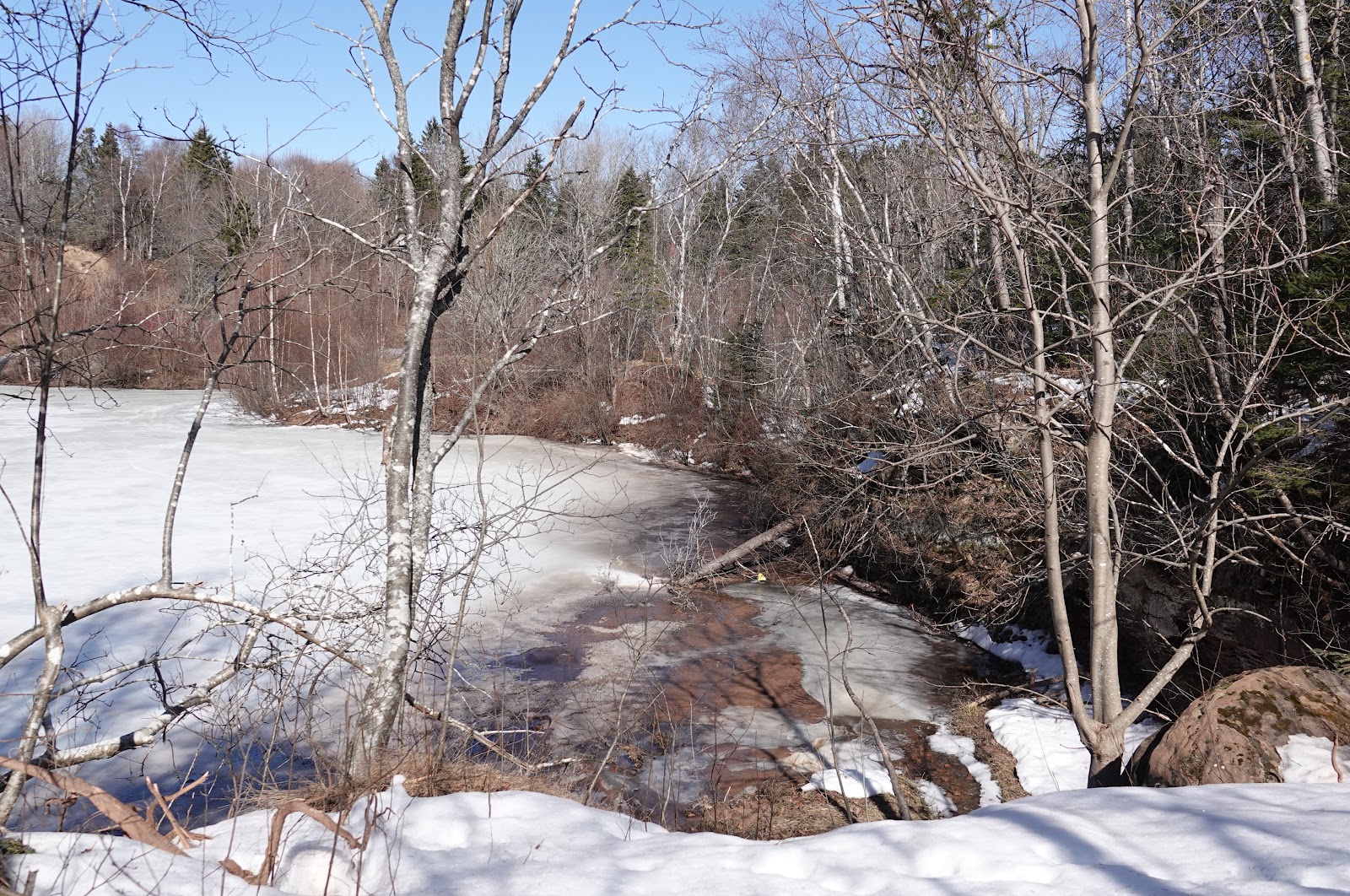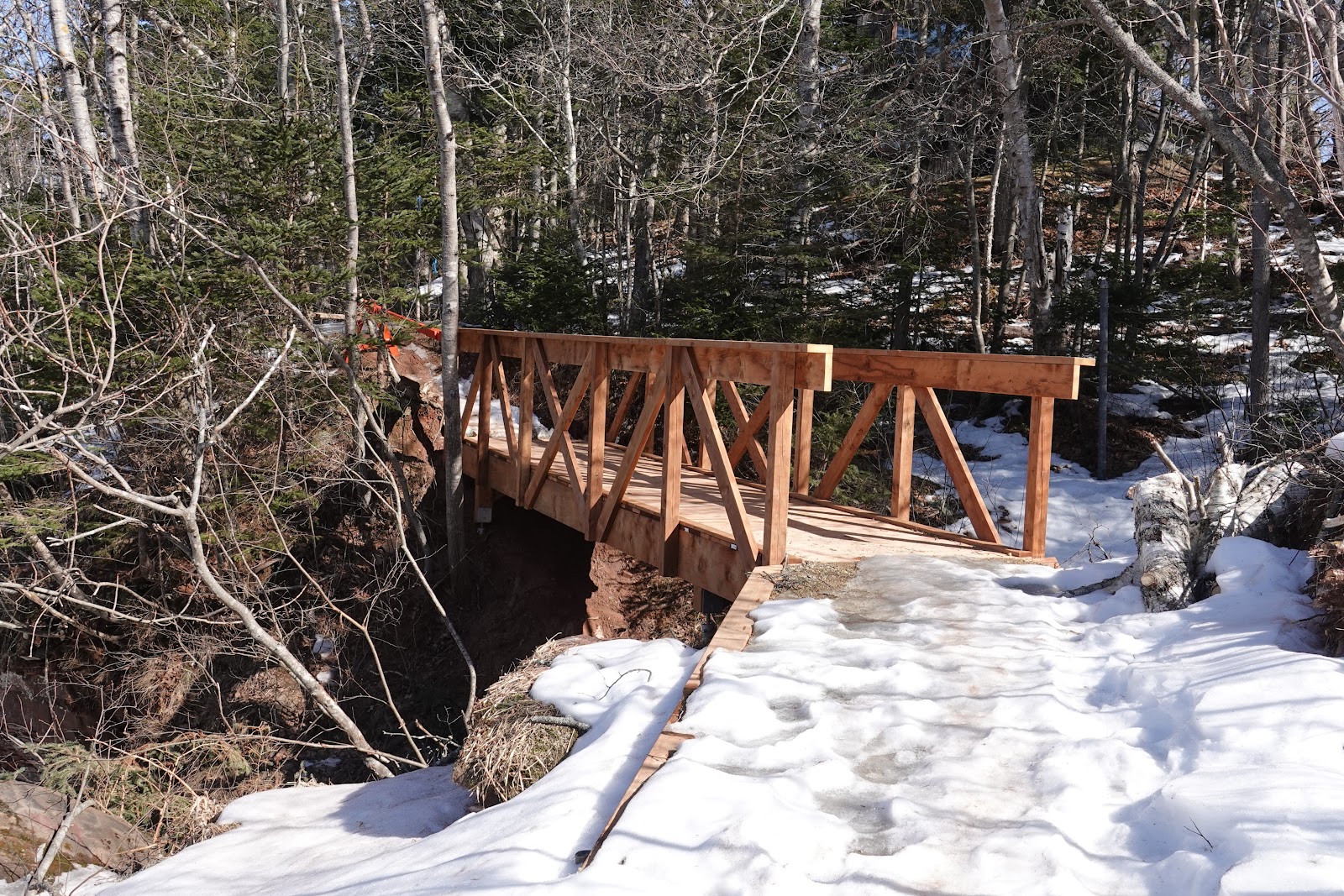NATURE MONCTON NATURE NEWS
March 14, 2025
Nature Moncton members as well as any
naturalist in New Brunswick or beyond are invited to share their photos
and descriptions of recent nature sightings to build a fresh (almost) daily
edition of Nature News
To respond by e-mail, please address your message to the
information line editor, nelsonpoirier435@gmail.com .
Please advise the editor at nelsonpoirier435@gmail.com and proofreader Louise Nichols at Nicholsl@eastlink.ca if any errors are noted in wording or photo labelling.
For more information on Nature Moncton, check the website
at www.naturemoncton.com.
Proofreading courtesy of Louise Nichols
**Louise Nichols visited a couple of spots in Sackville
in the sunshine of Wednesday afternoon, including one of her favourite trails
off Walker Rd. Bird life was quiet, but she did see a small flock of chickadees
and was surprised to see among them a boreal chickadee, a species she had
not seen for a while. The boreal chickadee wanted to mostly hide as they
so often do, but it came out in the open briefly at one point for a
photo. Louise also saw a few red-breasted nuthatches. Not
much variety yet, but the boreal chickadee made her day!
She also stopped to visit the Pickard Quarry in
Sackville, which is being transformed into a nature park that will be made
more accessible to the community. A small parking lot has been created on
Charlotte Street, which will be one way of accessing the new quarry park.
This quarry was in operation for a number of decades from the 1880s onward and
provided much of the red sandstone used in the buildings of Mount Allison
University and elsewhere in Canada. More information on the quarry and
its history can be found at the following link to an article published after a
meeting at the Tantramar Town Hall last month:
From
sandstone extraction to wilderness park, Sackville’s Pickard Quarry now and
then |
Louise attaches a few photos of the quarry with its newly
built observation platform and bridge over the falls.
(Editor’s note: Nature Moncton has a field trip planned
to visit the Pickard Quarry site on June 14, 2025, with Richard Elliott as
guide.)
**Rheal Vienneau got somewhat encouraging news from Monarch Watch on the overwintering monarch
butterfly population in Mexico:
“Total forest area occupied by monarch butterflies
colonized at overwintering sites from Mexico was 1.79 hectares”
That is about double of the previous year. However, this was still the second-lowest
population size this decade and fifth lowest on record.
**Jane LeBlanc in St. Martins has not had northern
cardinals in her yard since fall but did see one not far from her place on
a walk Thursday with her dog. She is hoping they find her yard soon.
**Brian Stone stayed up late on the evening of Thursday,
the 13th, and the early morning of Friday, the 14th (of March), to photograph
the full Moon rising and the following total eclipse of the
Moon that happened later over most of Friday morning before sunrise.
At the beginning of the eclipse, some high-level icy clouds came over and
caused Brian a bit of a panic, but the skies cleared again in time for the best
parts of the show. A 22° lunar halo did show up in those clouds but did
not persist long enough to ruin the eclipse.
(Editor’s note: as per tradition, most of us spent the
night sleeping, but not Brian Stone!)
**This Week’s Sky at a Glance, 2025 March 15 – March
22
As darkness settles in this Monday evening, go out and raise a glass to the
southwest and toast the constellation Orion, the mighty sky-hunter who on
that day signs his name as O’Ryan. And if you had dusted off an Irish Rovers
record during the day, perhaps you will be hunting the sky for some animals in
their signature tune written by Shel Silverstein, “The Unicorn.”
You will have no luck finding green alligators,
chimpanzees, rats and elephants. There is no humpy-back camel, either, but
there is the large and faint Camelopardalis in the seemingly blank sky high in
the north-northwest between Polaris and bright Capella. The name means
camel-leopard or giraffe. Cygnus the Swan is waving part of one wing
above the northern horizon, hoping to be picked for a long-necked goose. If you
check Cygnus out in the morning there is a faint constellation below its head
called Vulpecula the Fox. Nineteenth century star maps depicted the fox with a
goose in its mouth and the constellation was labelled as Vulpecula and Anser.
Cats? Well, there is Leo the Lion in the east, tiny Leo Minor between it and
Ursa Major, and elusive Lynx above Ursa Major. Oh, and don't forget Monoceros
the unicorn to the immediate east of O'Ryan.
This Week in the Solar System
Saturday’s sunrise in Moncton is at 7:31 and sunset will occur at 7:25, giving
11 hours, 54 minutes of daylight (7:36 and 7:30 in Saint John). Next Saturday
the Sun will rise at 7:17 and set at 7:34, giving 12 hours, 17 minutes of
daylight (7:22 and 7:39 in Saint John). The Sun reaches the Vernal Equinox at
6:01 am on Thursday, the first day of spring.
The Moon is near Spica this Saturday and it reaches third
quarter next Saturday, when it is at its farthest south of the ecliptic during
this 18.6 year Saros period. Venus sets about 45 minutes after sunset this
weekend and look for much dimmer Mercury seven degrees to its left with
binoculars. Venus reaches inferior conjunction next Saturday, followed by
Mercury two days later. Jupiter reigns in the southwest after evening
twilight above the V-shaped Hyades cluster, while Mars edges closer to
Pollux over the week. Saturn is out of sight behind the Sun and Neptune is in
solar conjunction on Wednesday. Rural observers might see the faint wedge of
the zodiacal light angling up toward the Pleiades 60 to 90 minutes after sunset
over the next two weeks.
Tune in to the Sunday Night Astronomy Show at 8 pm on the
YouTube channel and Facebook page of Astronomy by the Bay.
Questions? Contact Curt Nason at nasonc@nbnet.nb.ca.
Nelson Poirier
Nature Moncton












